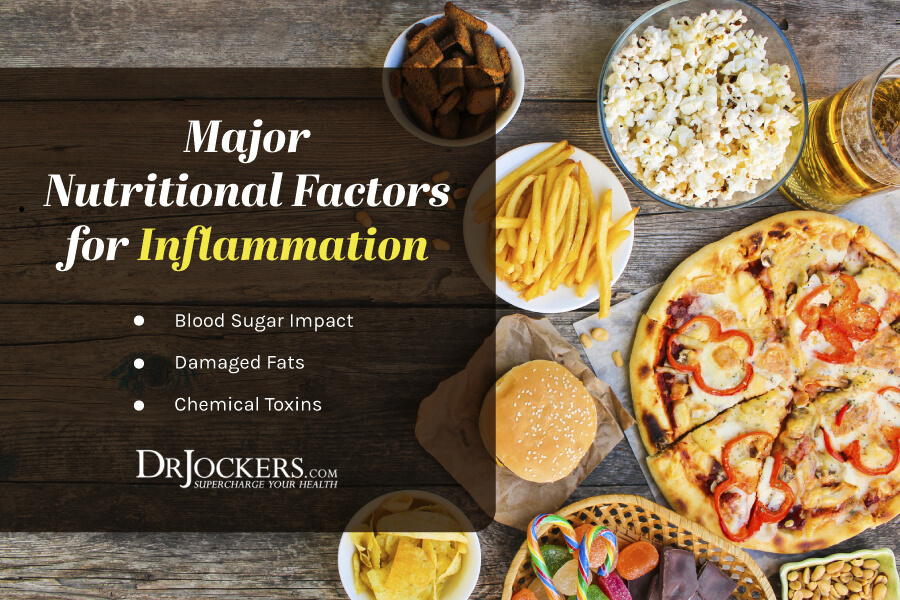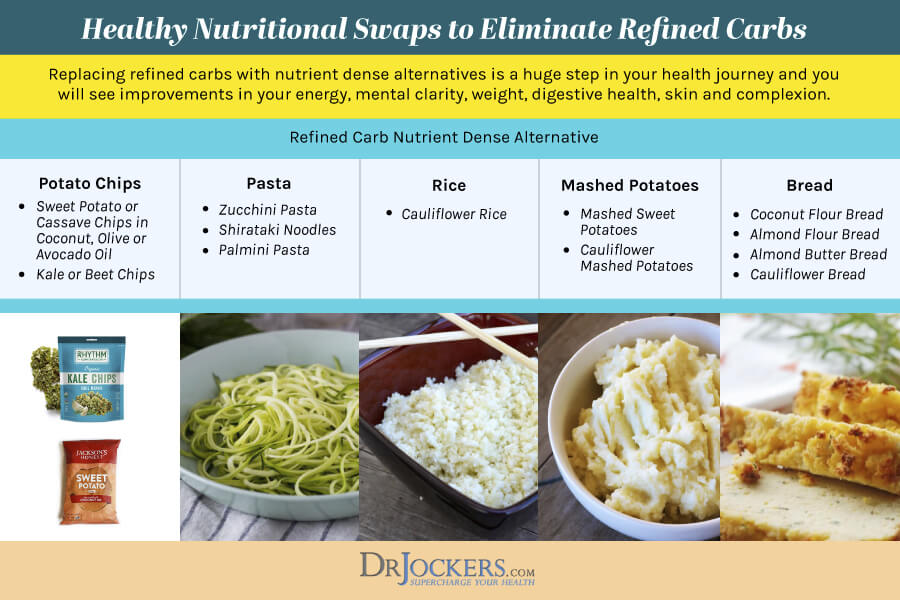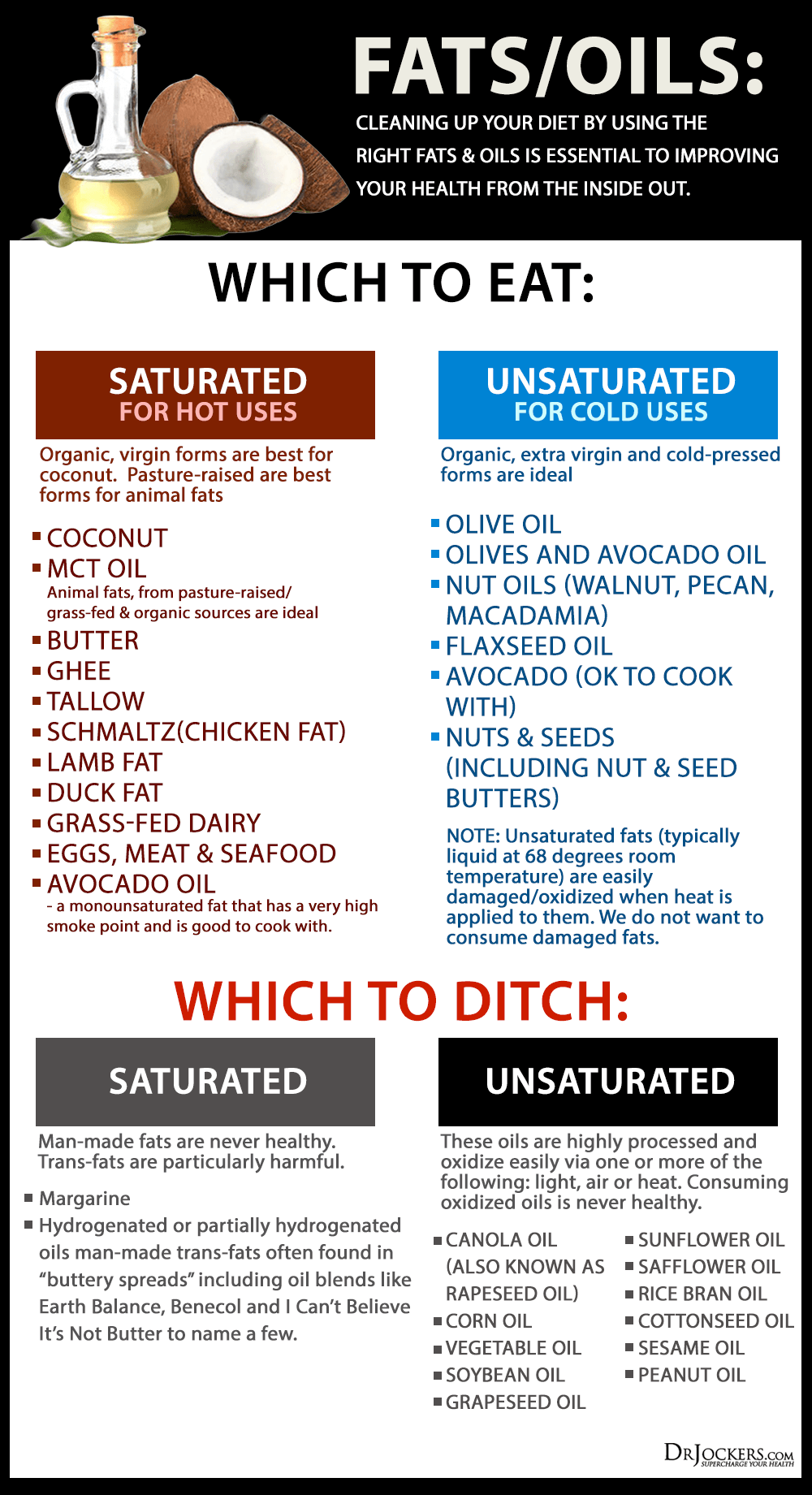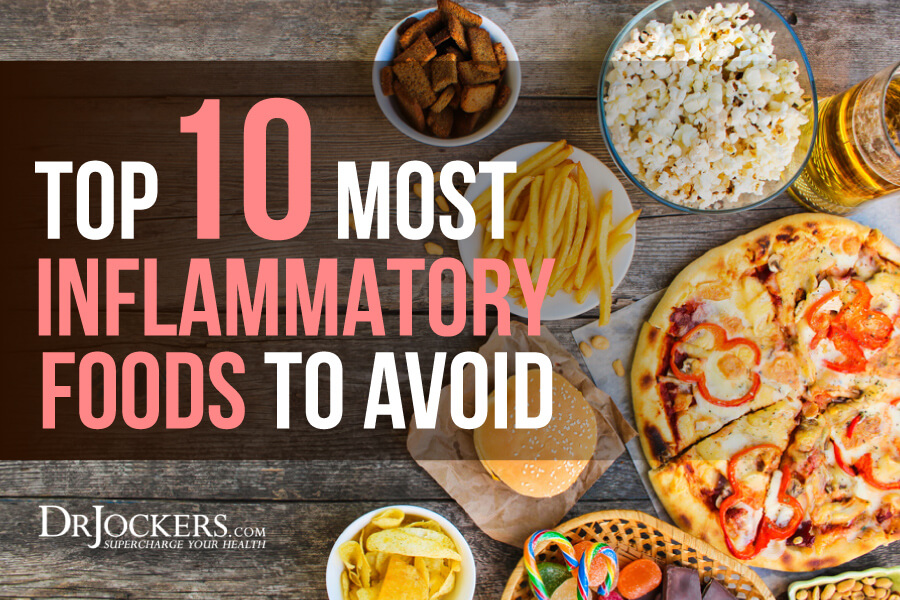Top 10 Most Inflammatory Foods to Avoid
Inflammatory foods are major players in the development of much of the suffering in our society. This is because the process of inflammation is at the root cause of most chronic health issues. No wonder you want to learn what foods you need to eliminate and what diet to follow to reduce inflammation, pain, and disease. It can feel confusing to find the right dietary advice with so many options available.
The truth is that eating healthy is actually rather simple. Once you understand what foods may damage and what foods may protect your health, you can finally eat a nutrient-dense diet without a worry, healing your body with every bite.
In this article, you will learn about the role of diet an inflammation and the main causes of inflammation. We’ll discuss the top 10 inflammatory foods you need to eliminate, what to choose instead, and how to eat a healing diet that benefits your health.

What Is Inflammation
Inflammation is your body’s defense mechanism to fight against potential harm, such as infections, injuries, and toxins. It’s part of your body’s inherent immune response that promotes healing and recovery.
Inflammation itself is not bad. Acute inflammation helps you to repair tissue damage when you have an injury and helps you recover from colds, illnesses, or exposure to allergens.
When it comes to inflammation, the problem is chronic inflammation, which is the result of an excessive stress load on your body, including physical, emotional, and chemical stress. Being exposed to constant stressors, your immune system becomes overwhelmed and increases the inflammation response.
This may lead to more white blood cells, cell changes, and eventually tissue and organ damage. Chronic inflammation plays a role in a variety of chronic pain symptoms and health issues, including metabolic syndrome, type 2 diabetes, Alzheimer’s disease, non-alcoholic fatty liver disease, and autoimmune conditions (1, 2, 3).

The Role of Diet and Inflammation
Diet plays a major role when it comes to inflammation. An inflammatory diet that is low in nutrients is one of the main causes of modern-day inflammation. Cytokines are proteins secreted by your immune system to regulate your immune response. Certain foods can trigger your immune system and lead to the overproduction of pro-inflammatory cytokines and the underproduction of anti-inflammatory cytokines (4, 5).
The good news is that your diet also plays a role in preventing and reducing inflammation. While inflammatory foods, such as sugar, refined oils, and gluten may increase the risk of inflammation, eating an anti-inflammatory diet may help you to overcome chronic inflammation and improve your health.
To learn more about chronic inflammation, read this article.

Major Nutritional Factors for Inflammatory Foods
When it comes to your diet there are several major factors that play a role in chronic inflammation. When we consume food it will have an impact on our physiology. These 3 factors are key considerations when it comes to the foods we choose. Let’s take a look at each.
Blood Sugar Impact
An inflammatory diet with too much sugar may lead to blood sugar imbalances in your body. This may cause inflammation and the overproduction of inflammatory cytokines increasing your risk of insulin resistance and elevated blood sugar levels leading to further inflammation, pain, and disease (6, 7).
To learn about how to balance your blood sugar, read this article.

Damaged Fats in Inflammatory Foods
Your body needs fats for fuel, however, not all fats are created equal. Polyunsaturated fats, such as corn, soybean, safflower, and other vegetable oils are highly unstable and are prone to oxidation when exposed to heat, light, or air.
During the cooking process they also become damaged or oxidized, making them even more inflammatory and destructive to your health (8). These oils are particularly bad for the endothelial lining of your blood vessels and for your skin: they greatly contribute to the formation of acne, aged spots, and wrinkles.

Chemical Toxins in Inflammatory Foods
Environmental toxins are everywhere, in our air, food, water, and products. Long-term exposure to environmental toxins may overwhelm your immune system and increase chronic inflammation. An inflammatory diet with lots of processed, refined, and non-organic foods are high in toxins.
Choosing an anti-inflammatory, organic, and healing diet, however, may lower inflammation. Furthermore, it’s important that you use organic, natural, or homemade products, and spend time in nature breathing fresh air.

Top 10 Most Inflammatory Foods
To eliminate chronic inflammation, it is important that you eliminate inflammatory foods from your life. Let’s look at the top 10 culprits.
1. Gluten
Gluten is a protein found in a variety of grains, including wheat, rye, and barley. It’s found in bread, pizza, pasta, cereal, and many other foods.
Gluten is particularly dangerous and must be completely eliminated by individuals with Celiac disease or a gluten allergy. What is more common, however, is gluten sensitivity; that may cause a low-level chronic inflammation, a variety of symptoms, and leaky gut. Eliminating gluten may lower inflammation levels and improve your health (9).
Alternatives: Gluten-free Alternatives
Choose gluten-free flours, including almond, coconut, quinoa, and amaranth flour. Use lettuce for burgers and sandwiches, collard greens for wraps, cauliflower for pizza crust, toasted sweet potato for avocado toasts, portabella mushrooms instead of buns, zucchini or cucumber noodles instead of pasta, and veggie sticks instead of crackers.

2. Sugar and Inflammatory Foods
I bet that you are not surprised to see sugar on this list. Sugar is one of the most inflammatory foods, yet refined sugar is lurking everywhere from candy, snack bars, baked goods, pastries, sodas, sugary drinks, sweetened coffee and tea, pasta sauces, condiments, and more.
When you eat too much sugar, your body simply cannot process it quick enough. As a result, it releases pro-inflammatory messengers called cytokines. It may damage your immune system and lead to blood sugar issues (10).
Alternatives: Low-GI Whole Fruits, Vegetables, and Natural Sweeteners
If you are looking for something sweet, low-glycemic index fruits, such as berries and green apples, and sweet vegetables, such as beets and carrots provide plenty of sweetness with lots of nutrients and fiber to help to slow the breakdown of sugar.
Natural sweeteners, such as monk fruit and stevia may also sweeten your teas and baked good without disrupting your blood sugar balance and resulting in inflammation.

3. Refined Carbohydrates are Inflammatory Foods
Refined carbohydrates and refined flour are found in most baked goods and other foods in your grocery stores, including white bread, bagels, crackers, pasta, flour tortillas, and breakfast cereal. Besides possibly being full of gluten, they are inflammatory and low in nutrients.
Refined wheat flours are high in sugar. They are stripped of nutrients and slow-digesting fiber. Hence, your body breaks them down way too quickly leading blood sugar spikes, pro-inflammatory response, inflammation, and health issues (11).
Alternatives: Unrefined Flours and Creative Options
Look for gluten-free and unrefined flours. Get creative by eating kale chips or sweet potato chips cooked in coconut oil instead of potato chips. Use veggies sticks instead of wheat crackers, collard greens and lettuce instead of bread and tortillas, coconut wraps instead of flour wraps, cauliflower rice instead of white rice, baked sweet potato fries instead of French fries, and zucchini noodles or palmini noodles instead of pasta.
You can also check out our recipes for various types of bread alternatives including coconut flour bread, almond butter bread, and our garlic and rosemary cauliflower bread. Check out the graphic below for more ideas.

4. Conventionally Raised Meat and Dairy
I believe that eating meat is extremely important for your health. However, the kind of meat you eat matters. Any meat that is not organic and animals not being treated with the highest standards is full of hormones and not the best option. Hormones, antibiotics, and GMOs coming from grain-fed animals are highly inflammatory.
Historically, dairy has been part of a healthy human diet. Unfortunately, in recent decades, man-made refineries manipulated the dairy-creation process turning these once-superfoods into inflammatory foods. Conventional dairy is not organic and not obtained from pasture-raised animals. It’s full of growth hormones, antibiotics, GMOs, and toxic pesticides making them highly inflammatory and disruptive to your gut microbiome (12).
Alternatives: Grass-fed, Raw Dairy, and Non-Dairy Options
It is important that you make sure that the meat you eat comes from animals that were raised humanely and fed a diet that is meant to keep them healthy and are not treated with hormones. Make sure to eat pasture-raised poultry, grass-fed beef and lamb, and wild-caught fish.
Grass-fed raw dairy, including raw milk, grass-fed butter and ghee, and fermented yogurt or kefir are generally healthy for most people. People with mild to serious inflammatory conditions and immune dysregulation may have a difficult time tolerating even raw dairy. I recommend that you eliminate dairy for 90 days, then add it back to see how you tolerate raw and fermented dairy in small amounts. Non-dairy alternatives include coconut milk, coconut yogurt, coconut kefir, almond milk, and cashew milk.

5. Farm-Raised Fish and Seafood
Fish and seafood healthy sources of anti-inflammatory omega-3 fatty acids and protein. However, as always, it’s important that you know your source and choose seafood that supports your health.
Farm-raised fish are raised in crowded conditions, they are often given antibiotics, and fed a less-than-optimal diet. Farm-raised fish and seafood generally have more inflammatory omega-6 fatty acids, higher chemical exposure, and less protein than wild-caught counterparts (13).
Alternatives: Wild-Caught Fish
If you want to eat fish, I recommend wild-caught fish. Choose fish that is low in mercury, such as salmon, cod, tilapia, chunk light tuna, mullet, herring, anchovies, and sardines (14).

6. Processed Conventional Meat
As you’ve learned earlier, eating meat is extremely important for your health. However, it’s crucial that you eat healthy meat.
Processed meat, such as deli meat and cured meat are not organic, highly processed, full of hormones, additives, and other unhealthy ingredients. No wonder, they are highly inflammatory.
Alternatives: Pasture-Raised and Wild-Caught Options
I recommend that you choose pasture-raised poultry, grass-fed beef, pork, and lamb, and wild-caught fish. If you have trouble finding these at your local grocery store or health food store, then you can order virtually any type of meat and various cuts through US Wellness Meats, and they will deliver right to your door.
7. Trans Fats (Partially Hydrogenated Oils)
You might’ve heard the news already: trans fats are bad. There are two types of trans fats you may encounter in foods: naturally-occurring and artificial trans fats. Naturally occurring trans fats are made in the gut of some animals and they may make in small quantities to milk and meat products. The real problem, however, is with artificial trans fats that are industrially produced through a process that adds hydrogen to liquid vegetable oils in order to solidify them.
Partially hydrogenated oils are the primary dietary source of trans fatty acids in processed foods. Even the US Food and Drug Administration (FDA) doesn’t recognize them as safe. They are highly inflammatory and may raise your risk of high cholesterol, diabetes, heart disease, and strokes (15).
Alternatives: Grass-Fed Butter and Healthy Oils
I recommend that you choose grass-fed butter or ghee, coconut oil, or avocado oil.

8. Food Additives and Preservatives in Inflammatory Foods
If you carefully look at the ingredients of some processed foods at the grocery store or even in your own pantry, you will spot several food additives and preservatives. These ingredients are used to enhance flavor, texture, or color, or to extend shelf life. They have no nutritional value and are often inflammatory and harmful to your health.
Monosodium glutamate is used to enhance the flavor of some savory dishes at fast food restaurants. It has been associated with metabolic syndrome, weight gain, and other health complaints. Artificial coloring, such as Blue 1, Red 40, Yellow 5 and 6 have been associated with allergic reactions, inflammation, and some cancers.
Sodium nitrate found in processed meats may lead to inflammation and cancer. Other food additives and preservatives you should avoid include high fructose corn syrup, guar gum, sodium benzoate, trans fats, and any artificial flavoring (16, 17, 18).
Alternative: Organic Whole Foods
Choose organic whole foods and organic natural products without additives and preservatives.
9. Highly Processed Vegetable and Seed Oil
When it comes to fat consumption, it is important that you understand the importance of a healthy omega-3 to omega-6 ratio to control inflammation. A diet too high in omega-6 fatty acids is highly inflammatory and may contribute to the development of pain and disease. Omega-3, on the other hand, is anti-inflammatory (19).
While it is impossible to avoid omega-6 fatty acids, as some nutrient-dense foods, such as almonds, cashews, and other nuts have some in them, it’s important to make sure that omega-3s dominate your ratio. Vegetable oils, such as corn oil, canola oil, soybean oil, safflower oil, cottonseed oil, and peanut oil are high in omega-6 fatty acids. They are also damaged during processing and are highly inflammatory.
Alternative: Organic Virgin Coconut Oil
As a healthy source of fat and oil, I recommend organic virgin coconut oil. It’s rich in medium chain triglycerides (MCTs) that may be converted into ketones to further benefit your health.

10. Artificial Sweeteners in Inflammatory Foods
You already know that refined sugar is not good for you. However, you need to watch out for artificial sweeteners and flavor enhancers as well. Although not technically “foods” these artificial sweeteners and flavor enhancers can be used to create inflammatory foods.
Aspartame, acesulfame potassium, monosodium glutamate, sucralose, and other artificial sweeteners may add a sweet flavor to your food, but they are not healthy. They are highly inflammatory. They have a neurotoxic effect on your brain and may lead to mood disorders and brain-related cancer (20). You can read more about artificial sweeteners in this article.
Natural Sweeteners
You don’t have to ban sweetness from your life. Monk fruit and stevia are natural, low-calorie sweet alternatives that don’t raise your blood sugar. You may add them to your tea, coffee, and healthy baked goods without adverse health effects.

Follow a Healing Diet
Following a healing diet is the best thing you can do to reduce inflammation, lower your risk of developing a chronic disease, and improving your overall health. Fueling your body with an anti-inflammatory nutrition plan with nutrient-dense foods provides your cells and cellular DNA of your body with biological information necessary for your health.
Eating a healing diet may reduce inflammation in your body, stabilize your blood sugar, reduce toxic load, fuel your body with foundational nutrients, and support your healthy blood pH (21, 22, 23, 24, 25, 26, 27, 28, 29, 30, 31).
To follow a healing diet, first, you need to reduce or eliminate sugar and grains. As you’ve learned, white pasta, bread, rice, pizza, crackers, cereals, canned goods, ketchup, fruit drinks, deli meat, conventional yogurts, and candy are full of sugar and carbs and are highly inflammatory. Instead, for high functioning, you need vitamins, minerals, enzymes, and antioxidants from greens, vegetables, herbs, sprouts, and fruits.
Second, you need to get rid of bad fats, such as hydrogenated soybean, corn, and palm oils, and unhealthy vegetable oils, such as canola, safflower, and peanut oil. Instead, you need to focus on healthy fats, such as coconut oil, avocados, pasture-raised butter and ghee, nuts and seeds.
Lastly, you need to change the meat you eat. Eliminate processed and conventional meat. Choose organic, grass-fed beef, pasture-raised poultry, wild-caught fish, and pasture-raised eggs for clean protein and healthy nutrients. To learn more about the benefits of a healing diet, read this article.



